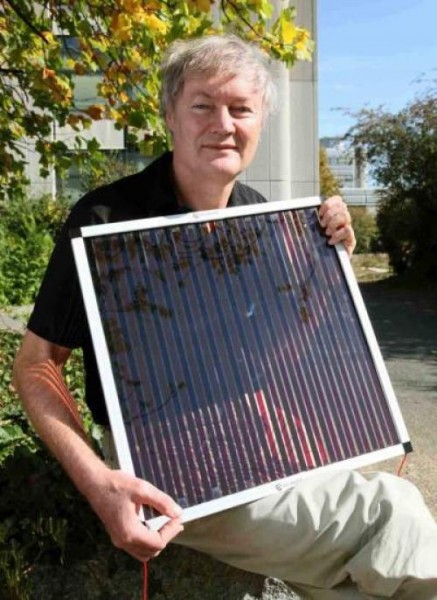Jul
16
Dye Based Solar Cells Catch Up to Silicon Cells
July 16, 2013 | Leave a Comment
The scientists show in a paper published in Nature they have developed a state solid version of the Dye Sensitized Solar Cells (DSSC) that is fabricated by a new two-step process raising their efficiency up to a record 15% without sacrificing stability.
Dye-sensitized solar cells have many advantages over their silicon-based counterparts. They offer transparency, low cost, and high power conversion efficiencies under cloudy and artificial light conditions.
But, until now their overall efficiency has been lower than silicon-based solar cells, mostly because of the inherent voltage loss during the regeneration of the sensitizing dye.
The new solid-state embodiment of the DSSC uses a perovskite material as a light harvester and an organic hole transport material to replace the cell’s electrolyte. Typical fabrication of this new DSSC involves depositing a perovskite material directly onto a metal-oxide film. The problem is that adding the entire material together often causes wide variation in the morphology and the efficiency of the resulting solar cell, which makes it difficult to use them in everyday applications.
The team led by Michael Grätzel at EPFL has now solved the problem with a two-step approach.
First, one part of the perovskite is deposited in to the pores of the metal-oxide scaffold. Second, the deposited part is exposed to a solution that contains the other component of the perovskite.
When the two parts come into contact, they react instantaneously and convert into the complete light-sensitive pigment, permitting much better control over the morphology of the solar cell.
The new method raises DSSC power-conversion efficiency up to a record 15%, exceeding the power conversion efficiencies of conventional, amorphous silicon-based solar cells.
The paper’s authors believe that it will open a new era of DSSC development, featuring stability and efficiencies that equal or even surpass today’s best thin-film photovoltaic devices.
The photovoltaic solar cell race is very much on. Silicon cells still dominate, thin film cells have gained some market share even with less efficiency but with lower costs. Dye-sensitized solar cells might be the middle of the road that combines affordability with energy production efficiency.



